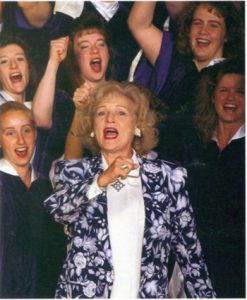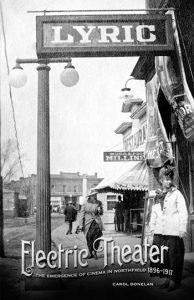On March 24 the Northfield Historical Society will open an exhibit, “Through the Camera Lens: Early Northfield Photography.” The exhibit will feature enlarged photographs that spotlight the work of two of Northfield’s earliest and finest photographers, Ira E. Sumner and Edward N. James.
In these days of instant photos and ubiquitous selfies, it is hard to imagine anyone having to hold very still for a photograph. But it was necessary to do so for the first commercially successful photographs called dagguereotypes, which date back to 1839. In this year Louis Daguerre of France showed how to create a one-of-a-kind image on a silvered copper plate and the photographic profession of Sumner and James was born.
Ira E. Sumner
As shown in this cartoon from Punch’s Almanack for 1855, the first commercially successful photographic process of dagguerreotypes, invented in France by Louis Daguerre in 1839, had its challenges and was not always successful. Punch was a British weekly humor magazine, founded in 1841, which introduced the term “cartoon.”
Ira Sumner’s name is remembered more often locally than that of E.N. James because in 1876 Sumner took photographs of two men who were very cooperative about sitting still. Sumner took photos of the bodies of Clell Miller and Bill Chadwell after they were shot on Sept. 7 by Northfield citizens defending the First National Bank from robbery by the James-Younger Gang. These photos were sold nationwide, printed in newspapers, magazines and books and are still sold as cards at the Northfield Historical Society today. E.N. James (not related to Jesse James) ended up in California where he worked in orange groves while showing continuing mastery of the evolving photographic profession. Both Sumner and James made invaluable contributions to the pictorial history of our area that are celebrated in this Northfield Historical Society exhibit.
Some interesting details of Ira Sumner’s life are found in an account of his daughter, Grace Sumner Northrop, in Rice County Families (RCHS, 1981). Ira’s father, Ebenezer (called Eben), and Ira’s mother, Gracey Searles, had married in 1835 in Ohio where four of their ten children were born. But Eben felt Ohio was getting too crowded, so he moved his family to Illinois, where fifth child Ira E. Sumner was born on June 24, 1845, in Coral, Illinois (McHenry County). Northrop wrote, “When Ira was six years old, again the head of the family packed up in a covered wagon with two cows hitched on behind and started west.” At a stop in Chicago, land agents offered “great promises of a delightful future” if they would stay. But Eben was insulted and exclaimed, “Do you think I want to raise my family in a bog and swamp like this? Indeed no! I will push on until I find forest, prairie, water and good tillable soil.”
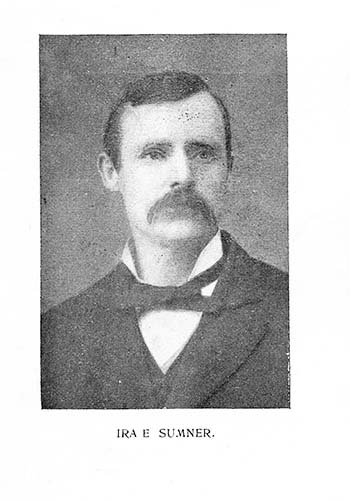

The family found what they desired near Cannon Falls and Ira Sumner grew to manhood here as he helped out on the farm. In 1864, Sumner attended Hamline, Minnesota’s first university, which was located from 1854 to 1869 in Red Wing. A listing of students includes Sumner, referred to as an artist, and Margaret Frazier [sic], who would become his wife in 1872. In Red Wing, Sumner served a three-year apprenticeship with B.F. Failing, learning the art of making dagguerreotypes, tintypes and albumen prints, according to a feature on Sumner by Patricia Krause in The Northfield Magazine (Fall, 1987).
In 1866 or 1867 (sources vary), Sumner came to Northfield to work for a year in the gallery of Welsh immigrant Zachariah Roberts. Sumner described Roberts’ start in photography during the Civil War in a March 14, 1896, story in the Northfield News. Roberts “had a whole gallery on a wheel barrow. He went from one camp to another taking pictures, and finally wheeled his barrow into Northfield and opened the first gallery in the city.” Sumner then returned to Red Wing for four years, establishing a gallery of his own and partnering with Gustaf Berg for a while on Main Street.
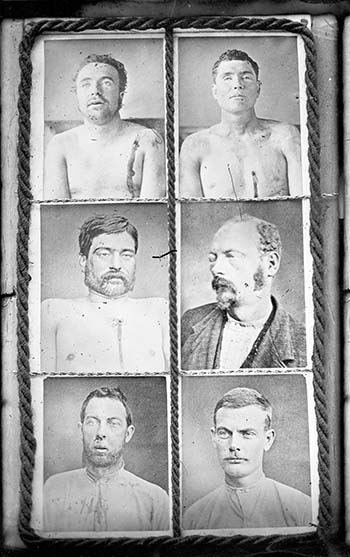
Sumner came back to Northfield after his marriage to Margaret Ann Fraser on New Year’s Day, 1872. She had come to the U.S. from Canada with her widowed mother in 1865 and settled in Red Wing where she met Ira. A Northfield News story from Feb. 8, 1890, said, “His fancy for Northfield and its beauty seemed to create a desire in him to return, so he moved back to the city and became a partner of Mr. Roberts.” They operated Roberts & Sumner together until 1875, when Sumner became the sole proprietor of Sumner Studios at 315 ½ Division St.
Then came Sept. 7, 1876, when the headline of the Rice County Journal extra at 4 p.m. was “Robbery & Murder! Desperate Attempt to Rob the Bank! J.L. Heywood Shot Dead at His Post – Would not open the Safe!” Barely two hours earlier, the James-Younger Gang had made a brazen bank robbery attempt at Northfield’s First National Bank. Two robbers lay dead in the street, felled in a gunfight by Northfield citizens Henry Wheeler and Anselm Manning. The rest of the gang (Frank and Jesse James, Charlie Pitts and Cole, Jim and Bob Younger) fled in disarray, pursued by posses in the largest ever manhunt in the U.S. Pitts was killed in a battle on Sept. 21 near Madelia in which the Younger brothers were captured. Jesse and Frank James had split from the others and made their way back to Missouri but the James-Younger Gang’s long string of robberies ended on Division Street.

Ira Sumner’s daughter, Grace Sumner Northrop, wrote a letter from her home in Sun City, Arizona, dated July 18, 1978, giving some family information to Emily Buth, the curator of Faribault’s museum, then located at the Buckham Memorial Library. She revealed that Ira Sumner had missed the excitement of the raid: “Father never got over regretting that he had gone hunting that day for the prairie chickens were flying.” Meanwhile, her mother Margaret was on her way back from her “old home in Canada where she had gone to introduce my brother, Charles Stuart Sumner, who was two years old.” Newsboys came through the train in St. Paul crying, “Big robbery in Northfield!” and saying the robbers had “shot and killed many Northfield residents.” Northrop said her mother “often told of the awful fear and worry she suffered as she traveled on to Northfield for she was sure Father was one of the dead residents. Great was her relief when he stood on the platform at the depot to meet her.”
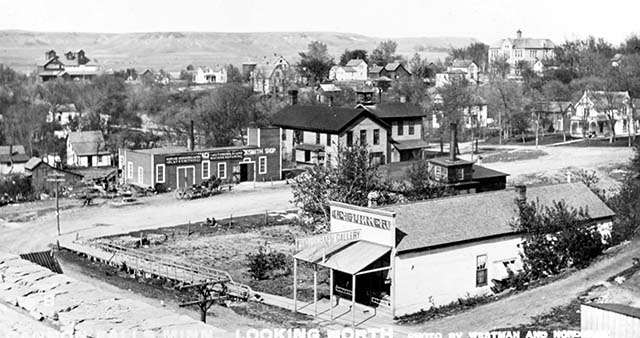

George Huntington, author of an account of the raid in 1895 called Robber and Hero, wrote that the bodies of the two robbers shot in Northfield were placed in an empty granary overnight. Trains brought in crowds of curious people who packed the town square, eager to hear details of the raid and to see the bodies which were put on display there. The bodies were also taken to Sumner’s studio to be photographed.
Sumner’s photos were used to hasten identifications of the unknown robbers at a time when bodies could deteriorate rapidly, but there is no doubt the photos were also money-makers. Northrop wrote that “with the help of a photographer in Mankato, a complete roster of the robbers caught near Madelia, Minnesota, was made.” (The Mankato photographer was Elias Everitt, whose name will resurface later in connection with E.N. James.) Just two weeks after Madelia, Northfield photographers Sumner and F.V. Bingham advertised for sale photographs of the six captured robbers in the Oct. 5, 1876, Rice County Journal. The photos were in high demand by the public from the outset and it is said that the photos earned $50,000, sold in sets of six, at $2 a dozen.
In 1877, Sumner went into partnership with F.V. Bingham, expanding offerings to include “a very full stock of frames, stereoscopes, views, albums &c. Pianos, organs and music-stools for sale on the best of terms.” This “bulletin” was written for the Rice County Journal of Jan. 4, 1877, and was signed, “Yours photographically, musically and muchly.” A year later, Sumner bought out Bingham. In the 1890s, Sumner had a branch gallery in Cannon Falls. The Cannon Falls Beacon, cited in the Northfield News of Sept. 5, 1891, reported that Sumner was building a photograph gallery there and planned “to have the finest gallery in Goodhue county.”
A story in the Northfield News of March 14, 1896, noted that “The art of photography has made some advances since Mr. Sumner went into business, but he has promptly kept up with the times and takes great pride in all the productions of his camera and allows no work to leave his studio that is not up to the standard. He also makes large contact print photographs, life size 20 x 24.” In October of that year Sumner accepted a position as a traveling salesman for a wholesale dealer of photographic supplies. At the turn of the century, his Northfield gallery was renamed Sumner & Son Studio when Charles Stuart Sumner joined his father in the business.
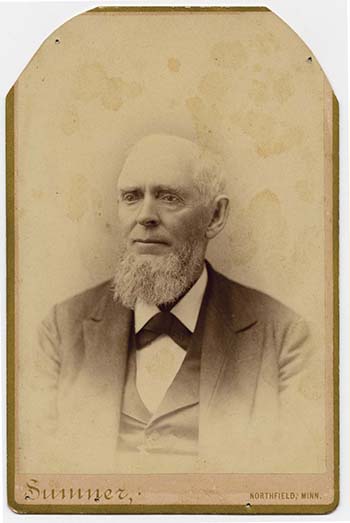
Ira Sumner’s name was in the headlines for helping capture a horse thief in Minneapolis in the Northfield News of Oct. 31, 1903. While riding with a friend in an automobile, they saw a man driving a horse-drawn carriage “at a furious speed,” who was cruelly beating an exhausted horse. The friend drove his auto into the carriage to break the harness and stop the beating. In the encounter that followed, the angry man struck Sumner “a stunning blow on the side of his head” and Sumner “hit the fellow a blow behind the ear and felled him. The fellow was held down until a policeman was called and then turned over to the officer.” This story concluded, “The reward which should rightly belong to Mr. Sumner was claimed by the officer to whom Mr. Sumner turned over the alleged horse thief.”
A Sept. 16, 1915, Northfield Independent article on “Sumner & Son, City’s Pioneer Gallery” said that there were “in the neighborhood of 100,000 plates stored away in his gallery,” showing men, women and children “from every station in life.” Sumner said his policy has “always been to treat everybody square” and to “deliver exactly what we say we will.”
After a couple years of poor health, Sumner died on July 10, 1918. His obituary in the Northfield News of July 12 said that he was “known for his jovial, youthful disposition, which he retained to the very last, and for the great interest which he took in his work.” He had been in the photography business in Northfield for 45 years, from 1872 until early in 1917, at the same place, 315 ½ Division St., and “his mind was clear to the last” as he read newspapers and followed world news. He was buried at Oaklawn Cemetery.
After his father’s death, Charles Stuart Sumner (known as Stuart) took over the business for 20 years until he sold it in May of 1938 to Owatonna photographer Louis Thomas. He died in a Faribault rest home on Jan. 2, 1954.
In May of 2007, the Northfield Historical Society received a donation of 12 glass plate negatives with images of six of the James-Younger Gang members from Northfield native Ben Nystuen who was attending his 50-year St. Olaf College reunion. The negatives had been given to him by his father, J. Elmer Nystuen, who had gotten them from Stuart Sumner. The elder Nystuen had made prints from the negatives, which he put in the men’s room of the West Woodley Street gas station he ran from 1928 to 1948. Ben Nystuen had stored the images in a dresser drawer in Colorado and decided to donate them after thieves broke into his home but fortunately left the negatives behind, not realizing their worth. These valuable glass plate negatives are part of the legacy now of Ira Sumner at the Northfield Historical Society.
E.N. James

Henry A. James (grandson of E.N. James) and his wife, Ardith Y. James, of Redlands, California, submitted an information sheet on “Photographer E.N. James” on Sept. 14, 1994, which is at the Rice County Historical Society. I have added some additional research to their very helpful account. (Henry A. James is deceased, but Ardith James, a native of Winona, Minn., still lives in Redlands.)
Edward Newell James was born June 20, 1850, in Manchester, New Hampshire, the second son of Benaiah Marston James and Mary Dearborn Haines James. The family moved west throughout Wisconsin and Minnesota, finally settling on a 65-acre farm east of Northfield in 1866. In 1871 Benaiah built and operated a cheese factory and later worked as a foreman at Ames Mills. He was elected to the state legislature in 1874 and again in 1889 (never campaigning for it, according to his 1910 obituary). He was a street commissioner and one of the first councilmen in Northfield.
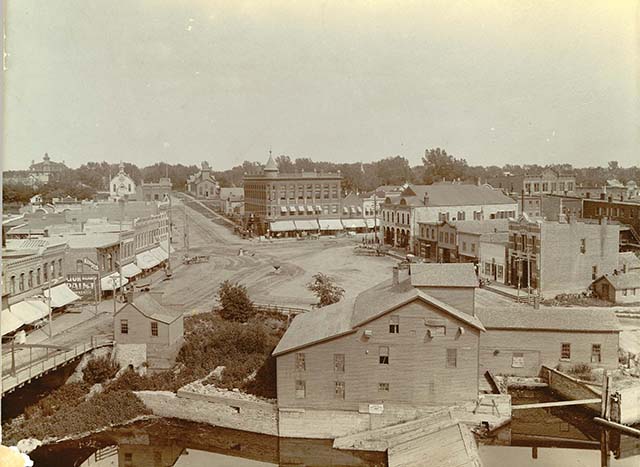
E.N. James (known by his initials) started a photography business in Northfield in 1872, at age 22, but moved to Illinois shortly thereafter for seven years. On April 26, 1876, he married Mary A. Sawyer, who died of pneumonia Sept. 2, 1878. Their daughter Mary Lydia (born in 1877) was brought to his parents in Northfield as he continued his photography business in Illinois and spent a year in Michigan.

In April of 1885, James was back in Northfield, renting part of the Lyceum Building at 109 E. 4th Street for a photograph gallery. The Carletonia of May 1, 1885, took note of his gallery, saying that James is “an enterprising, first-class artist, and is deserving of a liberal patronage by the public. We bespeak for Mr. James his full share of the student trade.” A sketch of his life in the Northfield News of Feb. 8, 1890, said he was still occupying the Lyceum gallery, standing “ready to meet all competition” with assistants who “are almost constantly engaged in touching up negatives, taking prints, and filling orders.” Then, an ad in the Dec. 6, 1890, Northfield News announced that he was “now fairly settled in his new quarters” next to the Bridge, ready to “add new laurels to his past unprecedented success.”
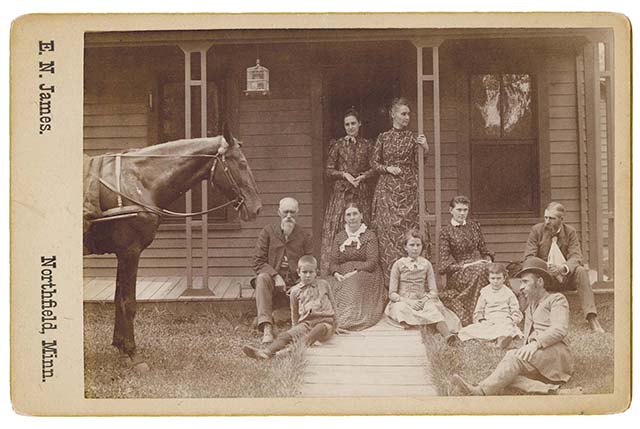
James had married Northfield schoolteacher Lucy A. Hutchinson on Oct. 14, 1889, and they had two sons, Warren on Aug. 22, 1890, and Ralph on Jan. 27, 1892. In October of 1892, James sold his Northfield studio to H.S. King. James took photos throughout south central Minnesota, including Mankato, where he probably met Elias Everitt. Then, in March of 1895, James traveled to southern states to photograph historic sites in states such as Virginia, North Carolina and Georgia. The Nov. 14, 1896, Northfield News, announced that “pioneer photographer” James was opening a gallery over Hagan’s Shoe Store, was “prepared to do first-class work” and wished to meet his old customers.
In April of 1890, Benaiah James had fallen in love with California after a visit to Riverside, a town which was becoming a leader of the new citrus industry and had been founded in 1870 by Northfield’s founder, John W. North. Benaiah’s wife followed in July and they settled in Redlands, California, just 17 miles from Riverside, planting an orange grove around the home which was said to be one of the best groves in the city 20 years later. E.N. James was encouraged by his parents to join them, as they felt the climate would be beneficial for his tuberculosis.
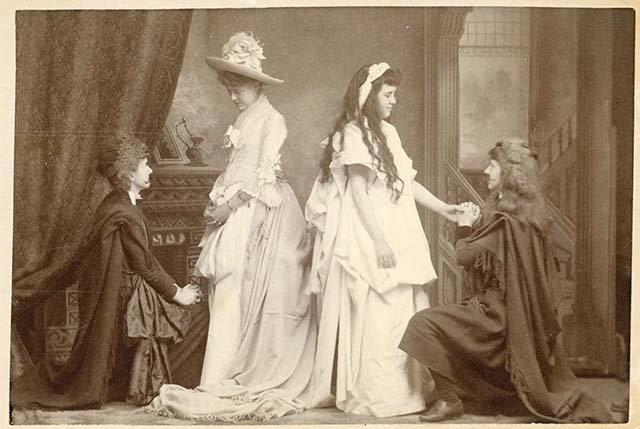
Finally, in January of 1898, James came to check out southern California, living with his parents on their orange ranch and working as a day laborer in neighboring orange groves. Elias Everitt of Mankato had moved to Redlands and, by May of 1899, James was working for Everitt as a free-lance photographer, while substituting in the gallery for him on occasion. (Everitt ran a studio in Redlands from 1897 to 1924 and there are 4,000 prints in his collection at the San Bernardino County Museum there.)
In June of 1899, James sent for his wife and two sons in Minnesota. They moved into the home of scholarly and kind Willard A. Nichols, receiving housing in exchange for caretaking of this retired civil engineer. James looked after Nichols’ 20 acres of orange groves and provided maintenance, but he also kept up his interest in photography. He took pictures of visiting presidents McKinley (1901) and Teddy Roosevelt (1903), the early business district of Redlands, orange groves and panoramas of the Redlands valley. Several of his photos are in the National Archives and one photograph of a peak in the San Bernardino mountain range, which had been presented to McKinley, is displayed at his recreated office at the Smithsonian Museum.
E.N. James died July 17, 1922, at age 72 in Redlands, California. Ira Sumner had died just four years before at age 73 in Northfield. Both of these pioneer photographers have left behind indelible images that have enriched local history.
Thank you for research help to Hayes Scriven, Stephanie Hess and Cathy Osterman of the Northfield Historical Society, Susan Garwood of the Rice County Historical Society, Zachary Wareham of the Cannon Falls Historical Society, Eric Hillemann of the Carleton College Archives and Afton Esson of the Goodhue County Historical Society.


